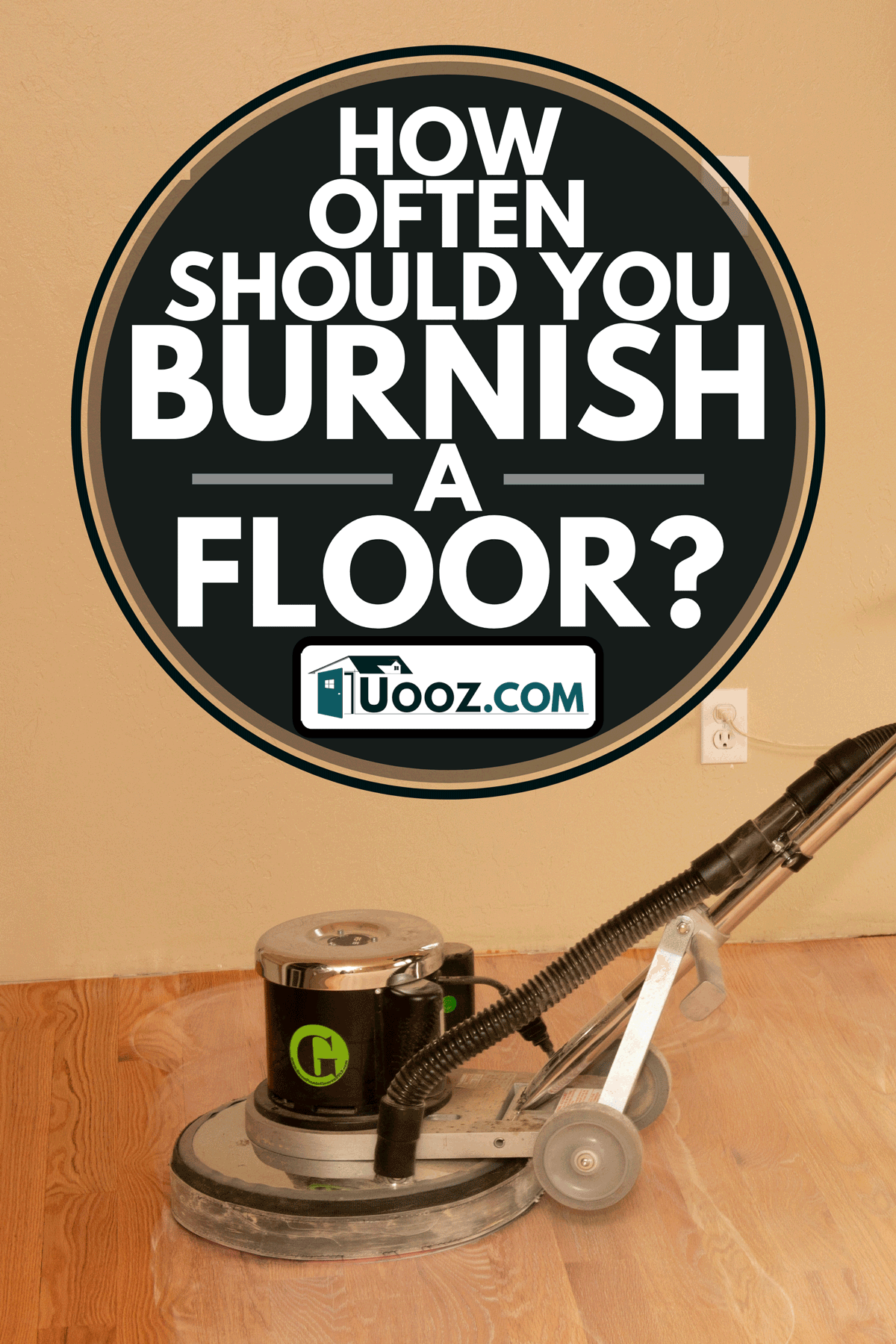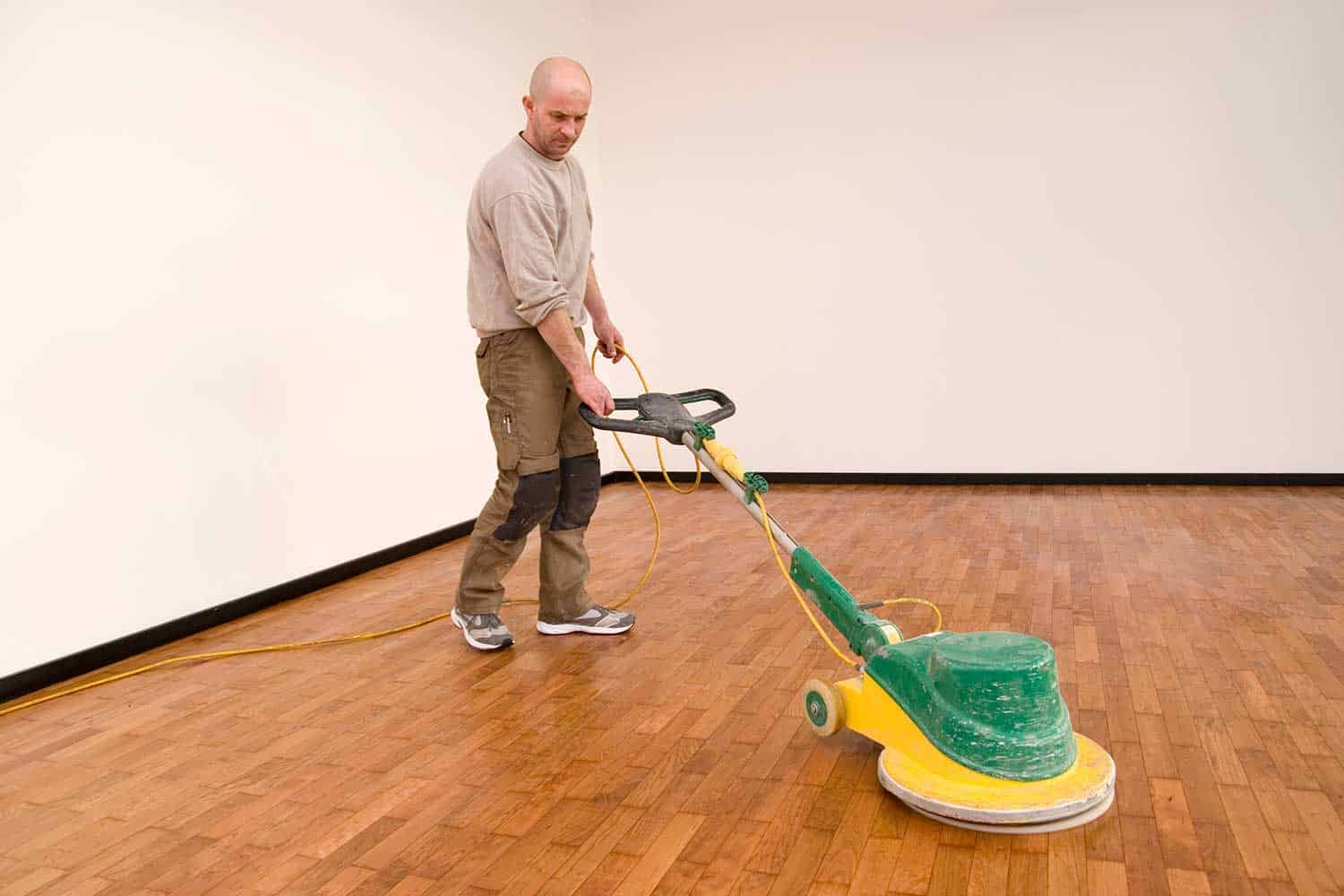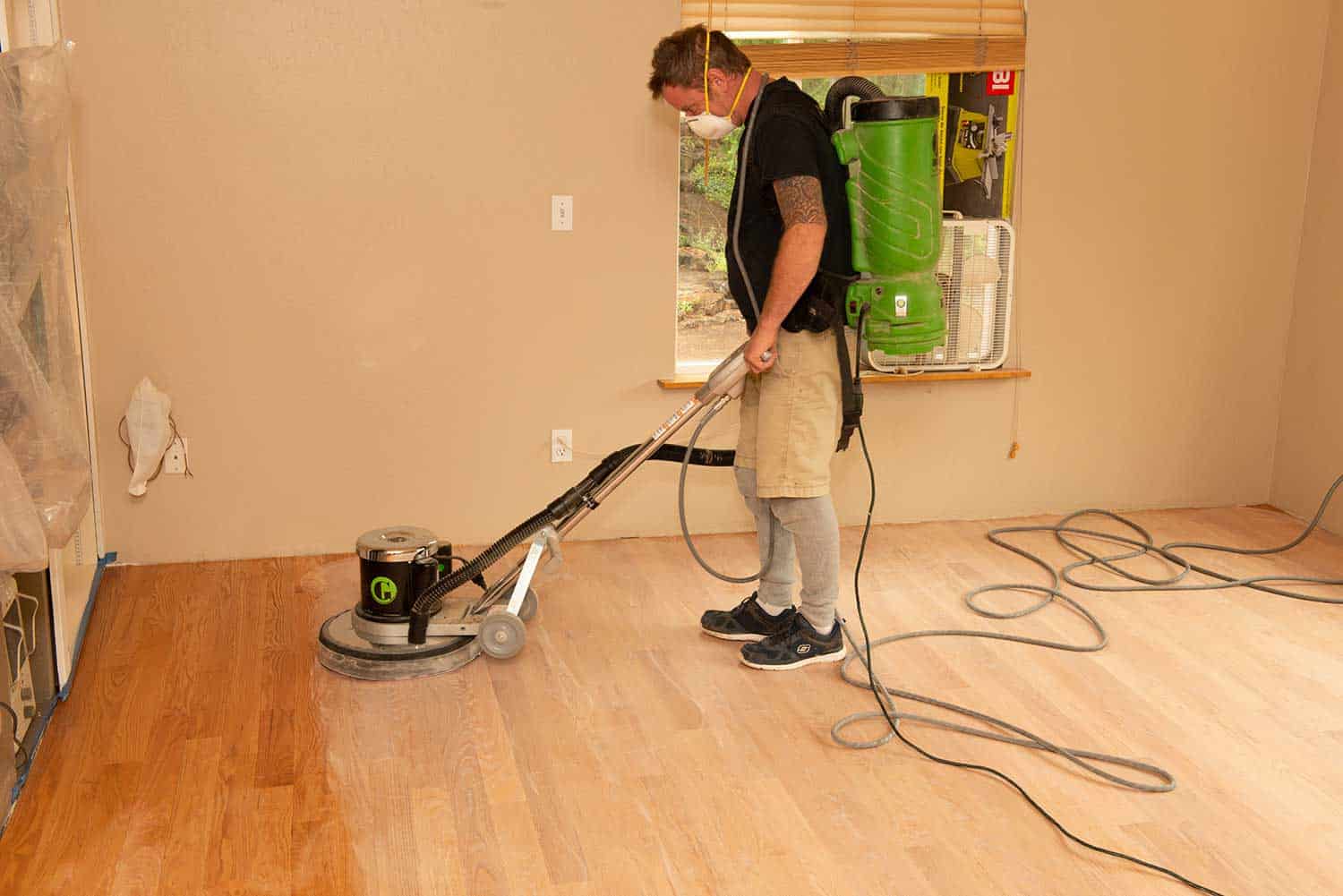Floor burnishing is a process that uses a high-speed rotating pad to buff floors to a perfect polish. It's a process most often used on commercial floors to keep them sparkling. This floor maintenance method helps places like gyms, grocery stores, and dance halls maintain their shiny mirror-like finish. Burnishing is often the last step after cleaning and buffing a floor. You may wonder what the best maintenance schedule is for burnishing floors so they stay looking fresh and clean.
How often you burnish a floor should be based on the level of floor traffic. If you are maintaining a high-traffic area, it is best to burnish the floor every week so that it does not lose its luster. On areas of flooring with less traffic, you can burnish them as needed or once a month.
The frequency that you buff and burnish a floor is only one aspect of a healthy overall maintenance schedule. Continue reading to learn more about how to keep your burnished floors looking and feeling good as new.

Maintaining a Perfect Burnish
How often you burnish a floor surface is essential to maintain its finish. Unlike buffing, which is a lower-powered basic floor cleaning process, burnishing is an additional finishing step. It requires special equipment and should be done by a professional on a maintenance schedule.
Burnishing is most often done on larger floor surfaces in commercial buildings, but could also be applied to residential floors. Being that commercial buildings have many more different people coming through them, they need more attention to keep up their appearance.
Foot traffic and type is the most important factor when deciding on a burnishing maintenance schedule. High foot traffic areas like entrance lobbies, courts, and waiting areas need the most attention. People walk, stand, or move around with their shoes on and the more that happens, the faster the high-end burnished finish will fade.
You definitely want to avoid "bald spots" where the burnish has been completely removed because these will stand out. Try to keep the whole floor looking like one continuously shined surface.
Weekly burnishing is the professional standard for most commercial burnished floors. Residential floor burnishing can be done based on when it is needed. People often don't wear shoes or have as many people on the floor over time at home, so it will last much longer. It is also much less common to burnish the floors of a home. Most home floor polishing is done by a buffing machine and wax polish or the application of a polyurethane layer.
How to Burnish a Floor

To properly burnish a floor, you need the right tools. A burnisher is a piece of power equipment used to polish or burnish a floor surface and bring out its original glossy shine. They operate at high speeds ranging from 1000 - 3000 RPM. To achieve a high gloss shine within a few passes, you should use a proper burnisher as opposed to buffering.
The first step to burnishing a floor is to prep the area. You should block access to the floor while you work and start with a pass of dust mopping and wet mopping. This will ensure the area remains undisturbed and that there is no debris to get in the way. The next step is to select the right burnisher pad for your finish/floor and applying it to the machine.
Next, you should apply the restoring solution. You can do this by mopping the floor with it or by applying it with a sprayer to the entire floor surface. Next, you should start the burnisher and lower it onto the floor. Then you would guide the burnisher across the floor until every area has been covered and the floor looks cohesively polished. You can then clean up once done to remove any dust that was created during the process and you will be done.
What Color Pad Would You Use to Burnish a Floor?
Burnishing pads come in a variety of colors. Each color indicates what it should be used for so it is important to know beforehand what you need. Black and brown pads are for stripping the top layer of a floor and are very abrasive. You would want to avoid using those unless you need to prepare a very thick or damaged surface for burnishing. Green pads can be used for redcoat scrubbing, which is removing a thin layer to apply a new or different coat of polish.
Green, blue, and red pads are used for different levels of soil cleaning. Green being the heaviest, and red the lightest. Finally, light blue, beige, white, and natural colors are used for routine cleaning and polish finishing work. They are the least abrasive pads of them all and are intended for the final touches and finishes. If you currently have some scratches on your floor and are looking for ways to repair them, check out our article, Does A Floor Buffer Remove Scratches?
Can You Burnish Hardwood Floors?

You can burnish hardwood floors as long as you use the correct burnishing pads. Wood is much "softer" than concrete, or laminate tiles and you cannot use pads meant for stripping on them. The heaviest pad for wood floors should be recoat scrubbing pads that are usually green. Floors in gymnasiums and arenas where sports are played must be kept polished and ready for prime time.
Is Burnished Concrete Slippery?
It is a common misconception that a mirror shine on concrete floors is slippery and possibly dangerous. The actual friction or slippery feeling of a floor surface is not based on its appearance but the finish. There are many floor polishes that can be burnished to a perfect waxy polish that provides varying levels of friction.
Consult a professional or read your product descriptions carefully to make sure you keep your floors functional and safe. If you've hired a floor installing and refinishing contractor recently and are wondering how to show your appreciation for a job well done, read our article, Do You Tip Floor Installers And Refinishers?
Should I Buy, Rent, or Lease a Floor Burnisher?
The frequency that you burnish your floors will help you determine whether to buy, rent, or lease the equipment. The cost of a professional burnisher can be anywhere from $1,300 to $20,000. High-quality equipment can be much higher than your budget for maintenance and cleaning.
Some prefer to contract out the work and avoid having to finance the gear themselves while guaranteeing a knowledgeable expert will maintain the floors. If you use your burnisher every week or two weeks, it may be worth the investment to purchase it so that you can avoid constant recurring rental fees.
A Uniquely Brilliant Finish
The reason that burnishing is such a specific yet sought-after finishing technique is because nothing else truly matches the brilliance of its results. Buffing can only bring floors and surfaces to a moderate shine, but burnishing is the final step to complete the look. There are many components to a good floor maintenance schedule with burnishing, but the frequency is among the most important. You should adapt how often you perform burnish redcoats and polished with how much floor traffic each floor surface experiences for best results.

